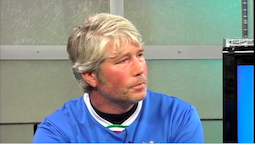 There are few more creative writers than the San Francisco-based Po Bronson. The author of four best-selling non-fiction books, two novels, a book of short stories and many articles for Newsweek, the New York Times and the Wall Street Journal, Bronson’s work has been translated into 19 different languages and his 2005 bestselling What Should I Do With My Life, social commentary about the meaning of work and identity was on the New York Times bestselling list for 10 months.
There are few more creative writers than the San Francisco-based Po Bronson. The author of four best-selling non-fiction books, two novels, a book of short stories and many articles for Newsweek, the New York Times and the Wall Street Journal, Bronson’s work has been translated into 19 different languages and his 2005 bestselling What Should I Do With My Life, social commentary about the meaning of work and identity was on the New York Times bestselling list for 10 months.
Bronson’s creativity is manifold. Not only has he written hit books about Silicon Valley both in non-fiction (Nudist on the Night Shift ) and fiction (The First $20 Million is Always the Hardest), but he has also authored best selling analyses of family (Why Do I Love These People) and, with Ashley Merryman, of education and bringing up children (Nurture Shock).
And now Bronson has turned his fertile imagination to the act of creativity itself. In a Newsweek cover story early this month, Bronson and his co-author Merryman write about the crisis of creativity now affecting American schools and children. According to Bronson, the results of creativity tests for American kids has been falling since 1990 – a particularly worrying statistic given that these test scores have been rising over the past twenty years in most other industrialized countries around the world.
So it was a real honor to have Po come into the Techcrunch.TV studio last week to talk about Silicon Valley creativity, its role in the broader economy, his own creativity and why, exactly, there’s a creativity crisis today in American schools. This may be the single most important issue facing not only the American economy, but also our culture and society. And there are few, if any, writers around today who can discuss creativity with the same erudition, imagination and wit as Po Bronson.
Part I: What makes Silicon Valley so creative, the special creativity of entrepreneurs, how to be the next Mark Zuckerberg and why creative people are so weird
Part II: What is the economic value of creativity, on its general usefulness and the importance of originality in creative thinking and actions.
Part III: The role of hard work in learning creativity, why creative people seek insecurity, imagining a cornucopia of creativity and why academics are so boring.
Part IV: Does creativity make us happy, why openness to new experiences in critical to creative production and why entrepreneurs in Silicon Valley don’t want their brains to go to waste
Part V: On the steady decline of creativity in American schools since 1990, the curriculum crisis, why test scores are falling and how to save the creativity of American children.